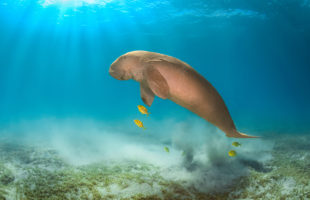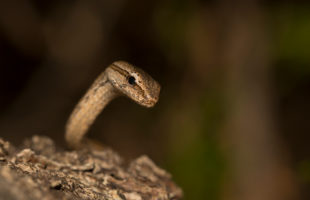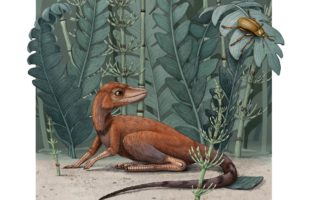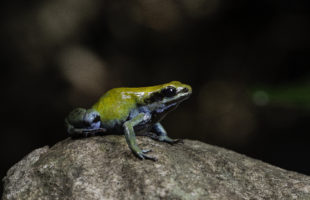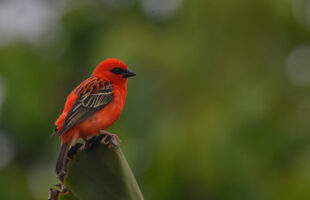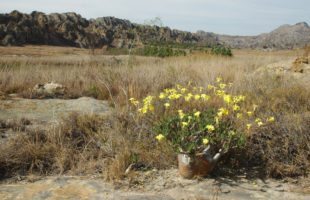Early in the morning, a deep, rather slowly repeated ‘bwup’ call can be heard in the rainforest. It is the call of the The pitta-like ground roller (Atelornis pittoides), a small bird that, like so many animals in Madagascar, is very special. Pitta-like ground rollers are endemic to Madagascar Pitta-like ground rollers are only found in Madagascar. They live in …
Lesen10 facts about lemurs
#1 Lemurs are only found wild in Madagascar The island of Madagascar is the only country in the entire world where lemurs occur naturally. Only two species of lemurs, the brown lemur, and the Mongoz lemur, were trafficked to the Comoros by humans and have successfully settled there. Many species of lemurs are not even found in zoos today, but …
LesenLittle Pearls of the South: Spider Tortoises
Tortoises are popular, both in Madagascar and all over the world. And yet these reptiles on the red island are massively threatened. One of them is the Spider Tortoise (Pyxis arachnoides), named after the beautiful, web-like pattern of its dorsal shell. The older Spider Tortoises get, however, the more the pretty pattern disappears. Really old animals – it is assumed …
LesenThe last dugongs
Madagascar’s coasts are home to a secret that few travellers know about. Not only is the island itself a treasure trove of biodiversity, but the sea around it is home to particularly rare mammals: dugongs (Dugong dugon). They depend on seaweed for their entire lives In Madagascar, they are called lamboara or trozogno. The term “sea cows” goes back to …
LesenHidden in plain sight
For a long time, there was only one Common Big-Eyed Snake on Madagascar – or so we all thought. In 2017, researchers from the USA discovered that there is a second species of Common Big-Eyed Snake in Madagascar. For centuries, the species had been hidden, even though it lived so obviously in plain sight. Accordingly, the newly discovered species was …
LesenA dinosaur for your pocket
Dinosaurs and pterosaurs were true giants, that is the general opinion about the lizards of prehistoric times. The largest creature that ever lived on earth was the dinosaur Argentinosaurus. With a body length of 30 metres and weighing an incredible 70 tonnes, it surpassed the famous Tyrannosaurus rex by far. Its largest counterpart in the air was the pterosaur Quetalcoatlus. …
LesenA frog on dry land: Mantella viridis
In the very north of Madagascar lives a small coloured frog: Mantella viridis. The males grow to a length of two to two and a half centimetres, the females hardly reach more than three centimetres. The small frog with the yellow-green back has several, small populations. On the one hand, Mantella viridis is found in the protected area of the …
LesenThe scalloped hammerhead shark
They are feared in many places. They should be more afraid of humans than the other way round: hammerhead sharks are important predators in the Indian Ocean. Without them, the marine ecosystem around Madagascar would not function. A special representative of the hammerhead sharks is Sphyrna lewini, the scalloped hammerhead shark. The name says it all: the broad, hammer-shaped head …
LesenRed Fodys
Everything is a bit more colourful in Madagascar – even the sparrows on the roofs! The best example of this is the Madagascar Fody (Foudia madagascariensis). The Malagasy call him Red Fody, sometimes spelt Fodi or Foudi. Fodys are distributed all over the country. They are considered one of the most common birds in Madagascar. They can be found near …
LesenPachypodium: Madagascar palms
Madagascar Palms Who doesn’t know them, the characteristic, bulbous trees of Madagascar? We are not talking about the world-famous baobabs, but the Madagascar palms. But they are not palms. They actually belong to the dogbane family. Better simply use the botanical name of the genus: Pachypodium. Pachypodium belong to the succulents, plants that are particularly good at storing water. You …
Lesen MADAMAGAZINE Your Magazine about Madagascar
MADAMAGAZINE Your Magazine about Madagascar




